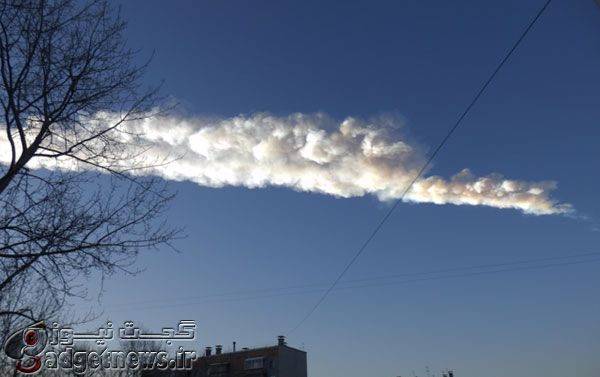
شهاب سنگ روسي را به خاطر داريد ؟ اگر خير به اينجا برويد.دانشمندان احتمال میدهند شهابسنگی که سال گذشته در کشور روسیه فرود آمد ممکن است در نتیجه برخورد با شهابسنگی دیگر آن هم در 290 میلیون سال قبل به سمت زمین متمایل شده باشد!
بر اساس تحقیقات صورت گرفته، این چنین تخمین زده میشود که شهابسنگ مادر که در واقع Chelyabsink جزئی کوچک از آن است، با شهاب سنگ دیگری که سرعتی معادل 1440 تا 5400 کیلومتر بر ساعت داشته، برخورد کرده باشد. بر اساس این فرضیات، شهابسنگ دوم حداقل قطری در حدود 150 متر داشته و تاثیر برخورد آن، شهاب سنگی با قطر 20 متر را به سمت زمین فرستاده است.
این یافته پس از آن بدست آمد که محققان اقدام به مطالعه تکههای شهابسنگ یادشده پس از برخورد با اتمسفر زمین و سقوط بر روی سطح آن پرداختند.
شین اوزاوا، محقق دانشگاه توکیو ژاپن و تیم تحقیقاتی وی ماده معدنی یشمی رنگی را در تکههای بلوری شکل موجود در این شهابسنگ پیدا کردند که تنها تحت فشار و گرمای فوقالعاده زیاد تولید میشود. آنها این طور نتیجه گرفتهاند که این فشار و گرما در نتیجه اثر یک شهابسنگ دیگر بر روی این شهاب ایجاد شده است.
پس از بررسی کریستالهای یشمی رنگ، این محققان توانستند اندازه، دما و مدت زمان اثر یادشده را تخمین بزنند. نتایج این هفته در گزارشی علمی به چاپ رسیده است. پیش از این محققان از تصاویر ویدئویی برای مشخص کردن مسیر حرکت این شهابسنگ به سمت زمین استفاده کرده بودند تا به تحلیل این انفجار که دومین انفجار بزرگ در تاریخ بوده بپردازند.
منبع : theverge
Scientists report that the meteorite that rocked Russia early last year may have been sent on a collision course with Earth after smacking into another asteroid as long as 290 million years ago. It’s estimated that the parent asteroid — a much larger object from which the so-called Chelyabinsk meteor broke off — impacted another asteroid in space at anywhere from 800 to 3,350 miles per hour (1,440 – 5,400 km/h). That second asteroid, according to the hypothesis, was at least 500 feet (150m) in diameter, and the impact sent the final 65-foot (20m) wide meteor in Earth’s direction.
The findings come after scientists studied small fragments of the Chelyabinsk meteor that made it through the massive explosion in Earth’s atmosphere and landed on the ground. Lead researcher Shin Ozawa, of Japan’s University of Tohoku, and his team found a mineral called jadeite in glass-like veins inside the samples. That mineral could only be produced under massive pressure and heat, such as that from an impact with another asteroid. By studying the shape and structure of the jadeite crystals, they were able to estimate the size, temperature, and duration of the impact. The results were published this week in Scientific Reports. Previously, scientists had used video footage to determine the path of the meteor to Earth, and analysis of the impact found it to be the second largest explosion in recorded history.
 گجت نیوز آخرین اخبار تکنولوژی، علم و خودرو
گجت نیوز آخرین اخبار تکنولوژی، علم و خودرو 





